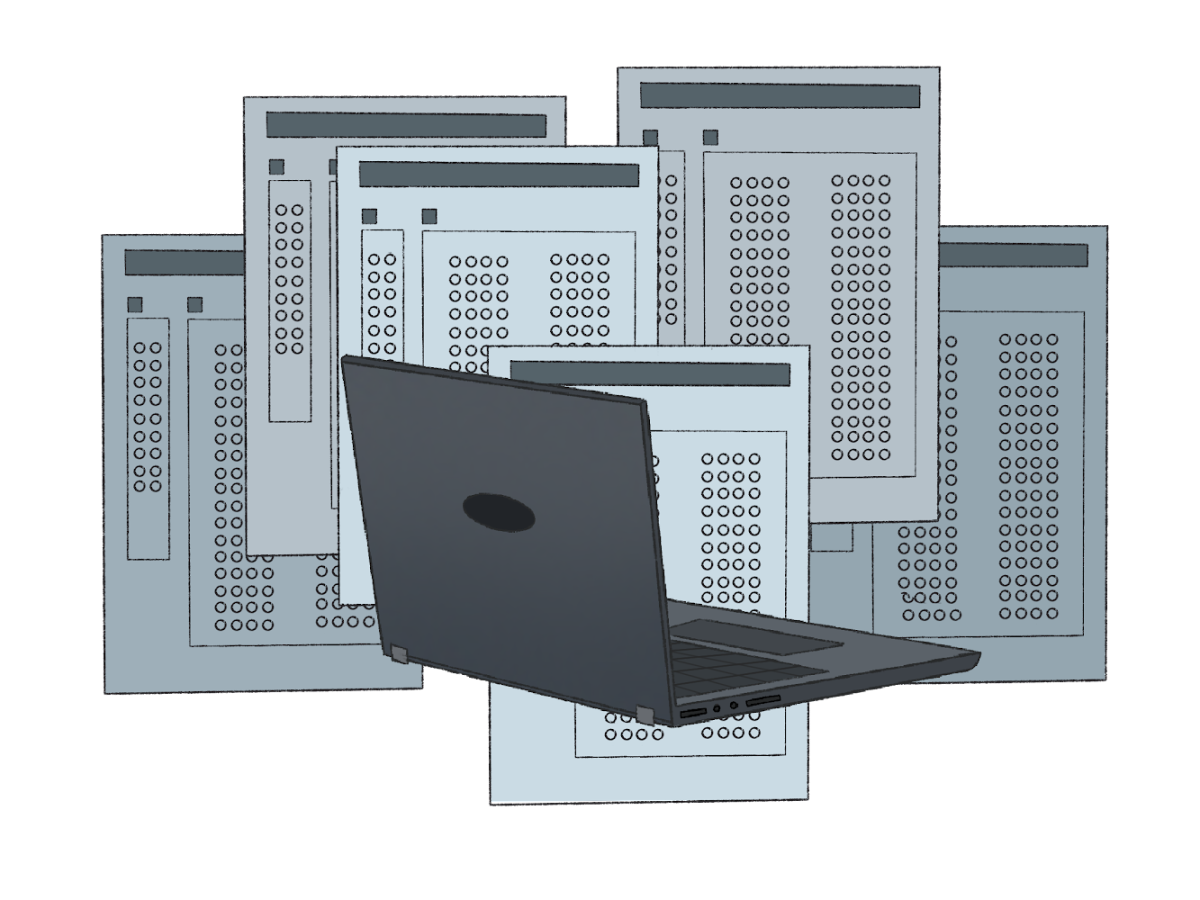Rather than SAT testing rooms being riddled with no. 2 pencils and bubble sheets, they will soon be filled with laptops. Beginning in March of 2024, the SAT will have a fully digital format.
“There’s a lot of moving pieces to it,” Director of College Counseling Susan Rexford said. “The understanding is that the test is going to be more accessible in terms of the kinds of questions they’re asking… but I need to see it go through one cycle before I understand what that impact is going to be.”
Starting in March, students will take the SAT on a digital software program called Blue Book. This software uses skip logic, meaning that the difficulty of questions will depend on a student’s performance. If a student gets questions of a certain difficulty right, then the test will move on to more difficult questions. If a student answers questions incorrectly, then the test will move to less difficult questions. The digital SAT will also be shorter, taking roughly two hours instead of the current three hours.
The digital SAT format weighs SAT questions depending on their difficulty. An algorithm will then determine a student’s score on the same 400-1600 point scale as is currently in use. The grade will depend on both the accuracy of answers and the difficulty of the questions the student received.
Rexford is concerned that Blue Book will not be able to process vast influxes of responses on nationwide test dates. However, this was not an issue during the Oct. 10 PSAT
Students can take the digital SAT on any type of laptop other than a Chromebook. For many students, this means taking the SAT on their personal computer, and students who use a Chromebook or do not have a laptop can request a loaner computer through the College Board.
The College Board also has plans for accommodations on the digital test like extended time and screen readers. If those accommodations will not be effective for a student with extenuating circumstances, they may contact customer service to request a paper test.
To prepare for the digital PSAT and SAT, the College Counseling Department used advisory sessions to train students on using the Blue Book software.
“Being online is going to be stressful or not stressful depending on how tech savvy a student is,” Rexford said. “But they’re going to find that one positive… that the students will be in rooms of 10 or fewer people in them, and somehow that seems a lot less stressful than being in the gym with rows and rows and rows of people with proctors roaming up and down the whole time.”
Junior Boaz Dauber took the digital PSAT. For Dauber, the digital PSAT was easier than the paper version he took last year because it was a shorter test and had a built-in calculator for the math sections.
“I’m used to doing all my work online, so it’s a format that I’m used to…,” Dauber said. “So it felt more like that, more than this strange filling in circles on paper that it was like last year.”
Junior Skye Feinstein plans to take the digital SAT later this year, and they expect it to be easier to earn higher scores in the digital format. However, they worry that if it is easier to earn a high score, the expectations of top schools will increase.
“It’s adding to this thing of school being about getting a number and nothing other than perfection being okay,” Feinstein said.
Rexford has a different perspective when it comes to the broader implications of the digital SAT. She thinks it is too early to tell whether the online format will make the SAT easier or more accessible to students. Rexford views the SAT’s changes as a response to the diminishing relevance of standardized testing as more schools become test optional and test blind.
“If you ask the College Board or the ACT, they measure college readiness, but do you think [the SAT] measures college readiness or is it like a torture chamber?” Rexford said. “I don’t think that any assessment that you take over a four-hour period in a controlled environment that’s full of stress and anxiety is going to be an accurate measure of what you know.”








